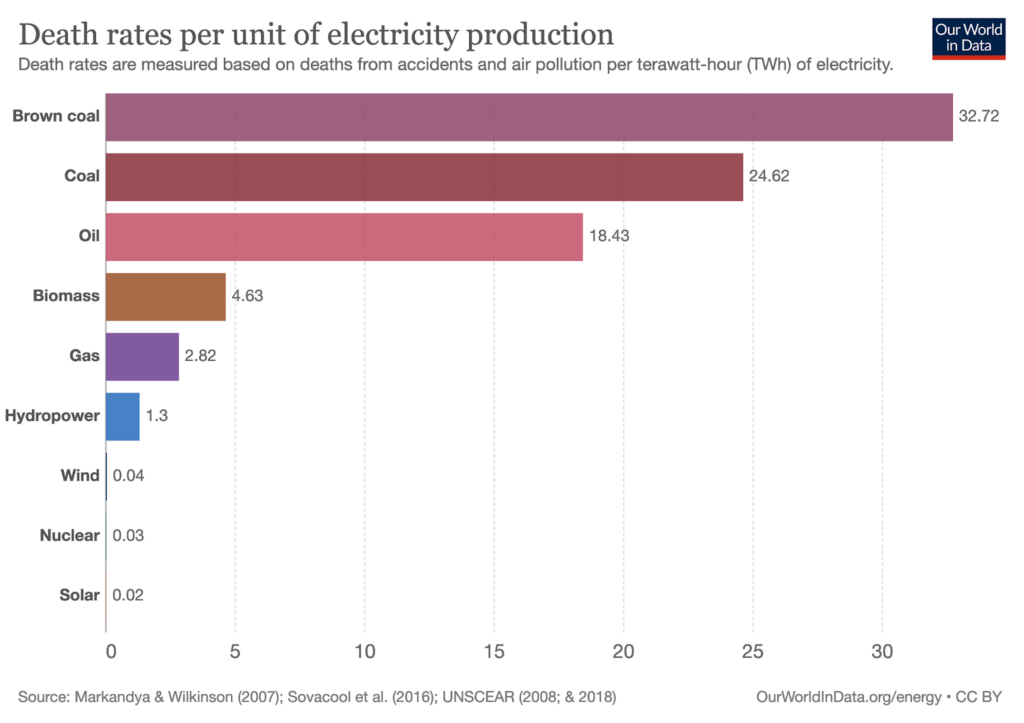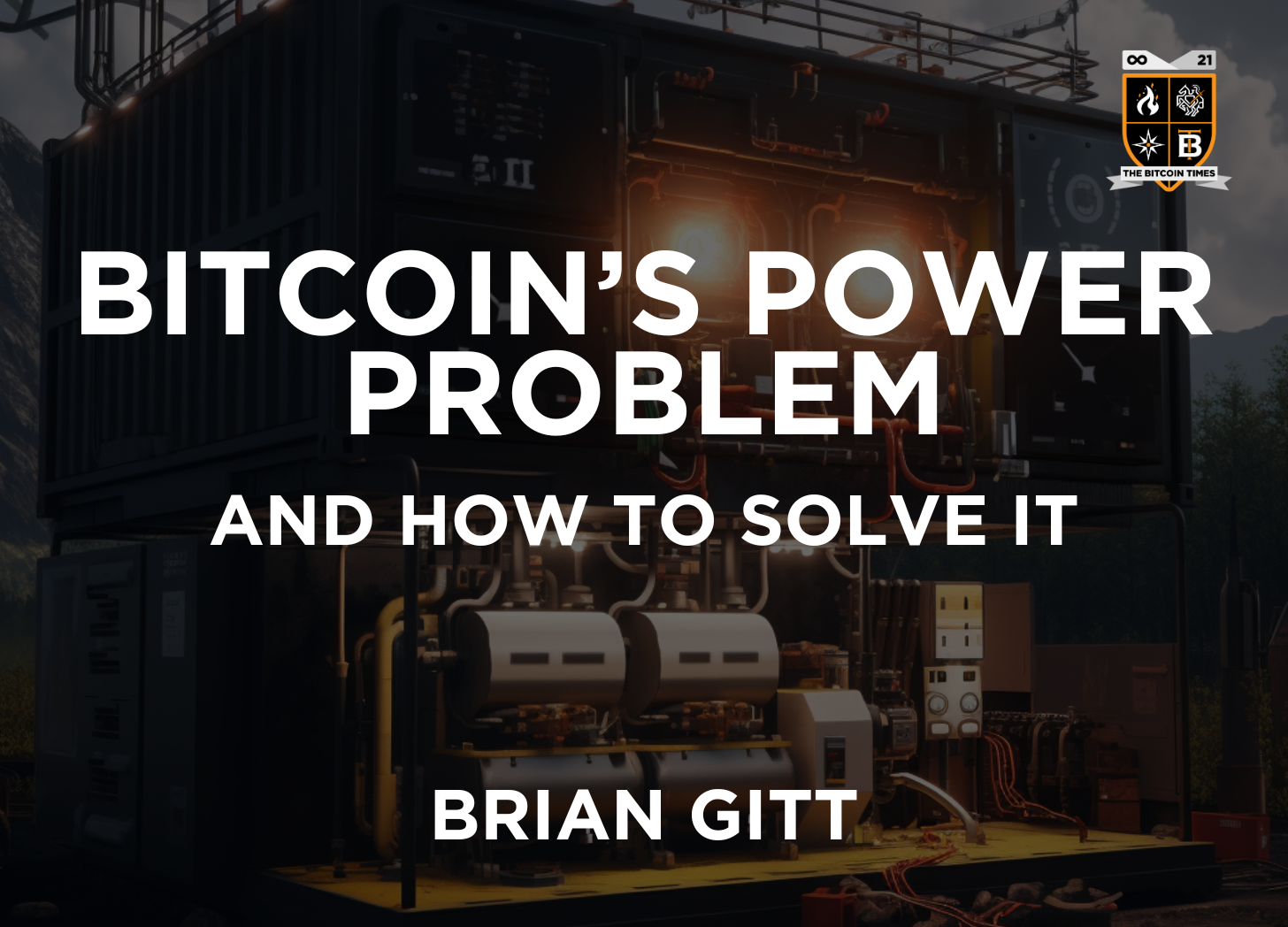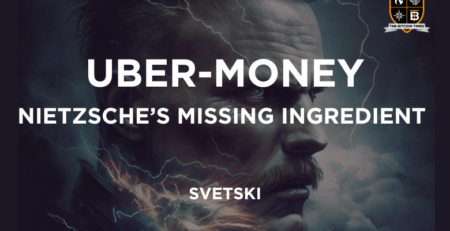Bitcoin’s power problem and how to fix it
Bitcoin has the potential to transform society as radically as the internet did. It enables people to securely store value and send it instantly anywhere in the world 24/7/365 with almost no cost and without relying on banks or governments. Not to mention, Bitcoin’s capped supply protects your money from inflation and the very nature of the network means that seizure from a government that doesn’t like what you’re saying is practically impossible.
But Bitcoin can fulfill its potential only if the data centers that enable Bitcoin mining can access enough energy. As it is, data centers are already struggling to find enough energy. Their demand for power has outgrown our current system’s capacity to both generate and transmit electricity to the data centers that use it.
Adding Bitcoin data centers into the mix only exacerbates the problem without the additional problem of its public perception. Most people realize we need data centers to search the internet, stream movies, and scroll social media—services people are familiar with and want. But fewer people are familiar with or want Bitcoin. So they see it as a waste of energy and attack Bitcoin’s power usage.
Of course, they’re wrong to see it that way. In reality, Bitcoin mining currently uses less than 0.1% of global energy. Even if billions of people end up using Bitcoin, its energy usage will be a rounding error as far as global energy usage is concerned. But because public perception says otherwise, new data centers for Bitcoin mining face community opposition and limited power access.
Off-grid Bitcoin mining can help. The energy sources it uses are disconnected from the central power grid, often in remote or hard-to-reach locations. That’s an exciting, growing trend, but it doesn’t provide a scalable solution to fix the core problem. We’re still going to need large, grid-connected Bitcoin data centers to allow Bitcoin to fulfill its potential.
This brings us to the next problem. Data centers can’t be built just anywhere, nor be powered by just any energy source. They’re best situated near power plants that have adequate transmission lines, and they’re best served by power that is reliable, affordable, and clean. This is essential for data centers that support critical systems—hospitals, national defense, GPS, communication, traffic lights, water, and wastewater treatment. These services need energy 24/7/365 in every type of weather and every type of circumstance.
While Bitcoin data centers are more flexible in their demand for power, to be economically viable they still need to operate most of the time, so they still need reliable power. Solar and wind are en vogue energy solutions, but they depend on the weather to cooperate and are sited in remote locations rather than in the population hubs where data centers are commonly located. As a result, solar and wind require new transmission lines, and building new transmission lines takes time—often ten or more years. Most Bitcoin investors and mining operators don’t want to wait until slow-moving utilities have built out the needed infrastructure before they start their operations. For these reasons, a Bitcoin data center powered by solar or wind would be at a significant economic disadvantage.
Natural gas and coal are reliable power sources, but new EPA air-quality restrictions make it hard to get permits for new fossil-fired power plants. PJM, a Northeast grid operator serving 65 million people in 13 Mid-Atlantic and Midwest states, says fossil-fuel power plants are retiring much faster than alternative energy sources are getting developed. This means that Bitcoin data center developers will likely face energy shortages and need to use low-emission energy sources to build new capacity.
With all this in mind, how do we solve Bitcoin’s power problem? The solution needs to provide unrestricted access to reliable, clean, affordable energy in every type of weather without waiting for utilities to build new transmission lines.
Enter Nuclear
Nuclear power can solve the problem: it’s reliable, affordable, and clean. Commercial nuclear plants have operated safely around the world for 70 years. There are currently 436 nuclear reactors worldwide, and the US itself has 93 active nuclear reactors which together provide 19% of America’s electricity and 50% of its clean power.
The reliability of nuclear power is second to none. Reliability is availability on demand: the ability to get people the electricity they need when they need it. US nuclear plants operate 24/7/365. Moreover, the electricity they produce is affordable: utilities that rely on nuclear power offer lower-than-average utility rates. And nuclear plants produce no air pollution and zero CO2 emissions.
If that’s the case, then you might ask, why doesn’t the US build more? The answer requires us to dig a few layers deeper. On the surface, US utilities aren’t currently willing to do it because typical nuclear plants require massive upfront investments and take a long time to build. New reactors in Georgia ran $16 billion over budget and six years behind schedule. Few (if any) US utilities are willing to take on that level of capital risk.
But the truth is, Nuclear plants don’t have to be so expensive. The nuclear plants that the US built during the 60s and 70s, for instance, required much less capital than we need to build nuclear plants today. What makes nuclear power expensive today are onerous government regulations that extend the timeline for building new nuclear plants far beyond what’s necessary to ensure safety. The longer the timeline, the higher the cost of complying with regulations and the higher the cost of financing nuclear projects.

What’s driving these onerous regulations are fears and misunderstandings about the safety of nuclear power. This is the real, underlying reason why Nuclear is under-developed. Many people falsely believe nuclear energy is dangerous—like they falsely believe airplanes are more dangerous than cars. But, when we look at the actual data, we see that nuclear is one of three sources of energy whose safety record is truly outstanding: solar, nuclear, and wind, in that order. No other energy sources even come close.
Many people fear nuclear power because they fear radiation. But EPA data shows that the average US home exposes you to 228 times more radiation than you get from living near a nuclear power plant. Airline flight crews are exposed to ~5 times more radiation flying from New York to Tokyo than workers at nuclear power plants. The nuclear power industry accounts for less than 0.1% of background radiation.
Some people worry about nuclear waste. But there’s never been a single recorded case of a human dying or being harmed from exposure to civilian nuclear waste. That waste takes the form of spent nuclear fuel. Contrary to what you may have seen on The Simpsons, spent nuclear fuel is solid (not glowing green liquid). It consists of metal tubes containing small pellets of uranium. These pellets are an extremely dense energy source. Ten of them can fit in the palm of your hand and store enough energy to power an average US household for a year. The pellets are placed in steel tubes which are gathered into bundles and loaded into the reactor. After the fuel has been in use for a couple of years, it’s removed from the reactor and placed into water to cool for another five years. After that it’s placed inside concrete and steel containers, which are stored in rows next to the reactor. The radioactivity of spent nuclear fuel diminishes with time. About 40 years after a fuel bundle is decommissioned, the heat and radioactivity of the fuel bundle will have fallen by over 99%.
Spent nuclear fuel requires care and attention to ensure it’s safely contained, but nuclear plants generate a small amount of waste compared to other energy sources. For example, nuclear plants produce 300 times less waste than solar plants. All the nuclear waste generated in the US since the 1950s could fit in a single Walmart Supercenter. In addition, nuclear is the only energy source that prevents waste from going into the environment.
Despite the impressive safety record of nuclear plants, regulators continue to respond to public misgivings about nuclear power. People often associate nuclear weapons with nuclear energy, and this confusion can lead to misconceptions and fears. As a result, they’ve overcorrected to avoid even the smallest chance of something going wrong. By focusing on minimizing any potential risks, they’ve unwittingly ignored any offsetting harms and benefits.
Imagine by analogy the government over-regulated the airline industry after a crash. Crashes do happen, but they’re rare. It’s reasonable to take precautions to avoid them, but those precautions need to account for other potential harms. If regulations are too onerous, the results end up harming both the airline industry and consumers. Over-regulation would freeze out new investment in the industry. Airlines wouldn’t seek to expand in ways that benefit consumers, and few if any investors would be attracted to the idea of starting a new airline. Consumers, for their part, would pay more and have fewer travel options. This has in fact happened over the last decade or two, and we’ve seen the quality of service, experience and offerings on flights diminish. Over-regulation consistently does more harm than good.
That kind of harmful over-regulation is in fact what’s happened in the nuclear power industry. It has not only made it difficult to invest in new nuclear technology and infrastructure, but it’s also harmed ordinary people. When Japan shut down all its nuclear power plants after the Fukushima accident, electricity prices soared up to 40%. That decision ended up causing over 1,280 deaths during cold temperatures from 2011 to 2014. To this day, only one death from radiation is attributed to Fukushima: a man who died of lung cancer many years after the accident. He was a smoker.
With all this in mind, we’re probably not going to get a big shift in consciousness or regulation happening, or large plants proliferating anytime soon. So we need another solution.
Enter Small Reactors
Large nuclear plants are extremely safe, but small nuclear plants are even safer.
If you’ve ever driven through an agricultural state, you might have noticed the containers they use to store grains—cylindrical steel tanks a bit taller than a house. Small modular reactors (SMRs) are about the same size and shape. SMRs differ from large conventional nuclear plants as much as modern smartphones differ from old rotary phones.
SMRs are the safest nuclear plants ever designed. They can cool themselves without relying on people, pumps, or mechanical systems to remove heat. This means the type of accidents that happened at Chernobyl, Fukushima, and Three Mile Island are physically impossible. In addition, SMRs can be designed to recycle spent fuel—both their own fuel and fuel from large nuclear plants.
SMRs have all the benefits of large nuclear plants—they’re reliable, affordable, and clean—but they’re less than one-tenth the size of traditional nuclear plants. Traditional plants require, on average, 800 acres of land, but the smallest SMRs can operate on just two acres. In addition, while traditional reactors need to be built near a lake, river, or ocean because they use water for cooling, most SMRs don’t need to be near a body of water. They can be sited almost anywhere—including on site at a Bitcoin data center or at a nearby location.
Since SMRs are so much smaller than traditional nuclear plants, they’re also faster and much less expensive to build. Off-the-shelf components and factory prefabrication allow some SMRs to be built in less than a year. Finally, and perhaps best of all, developers do not need to risk capital because some SMR companies offer power purchase agreements (PPAs). One example is Oklo, who builds and operates SMRs and sells the power it generates at costs equal to or lower than traditional energy sources. The expected timeline from a signed PPA to powering servers—including licensing, permitting, and constructing—is two to three years. This is often well within the planning for data center campuses.
In Closing
A future that unlocks the benefits of Bitcoin needs to solve Bitcoin’s power problem. Reliable, affordable, clean energy is the bottleneck that will ultimately prevent us from realizing Bitcoin’s full potential. SMRs offer a clear and compelling solution. They promise Bitcoin miners and data centers of all kinds, a path to energy independence—a plentiful source of reliable and affordable power that doesn’t harm the environment and doesn’t affect the surrounding communities. Such an energy source can provide data centers with power to unlock the benefits of Bitcoin and transform modern society.
We’re at the dawn of the nuclear age. It’s time to wake up and begin acting like the technologically advanced, energy abundant civilisation we have the potential to be.
It’s time to build nuclear power.
Brian Gitt
October, 2023



